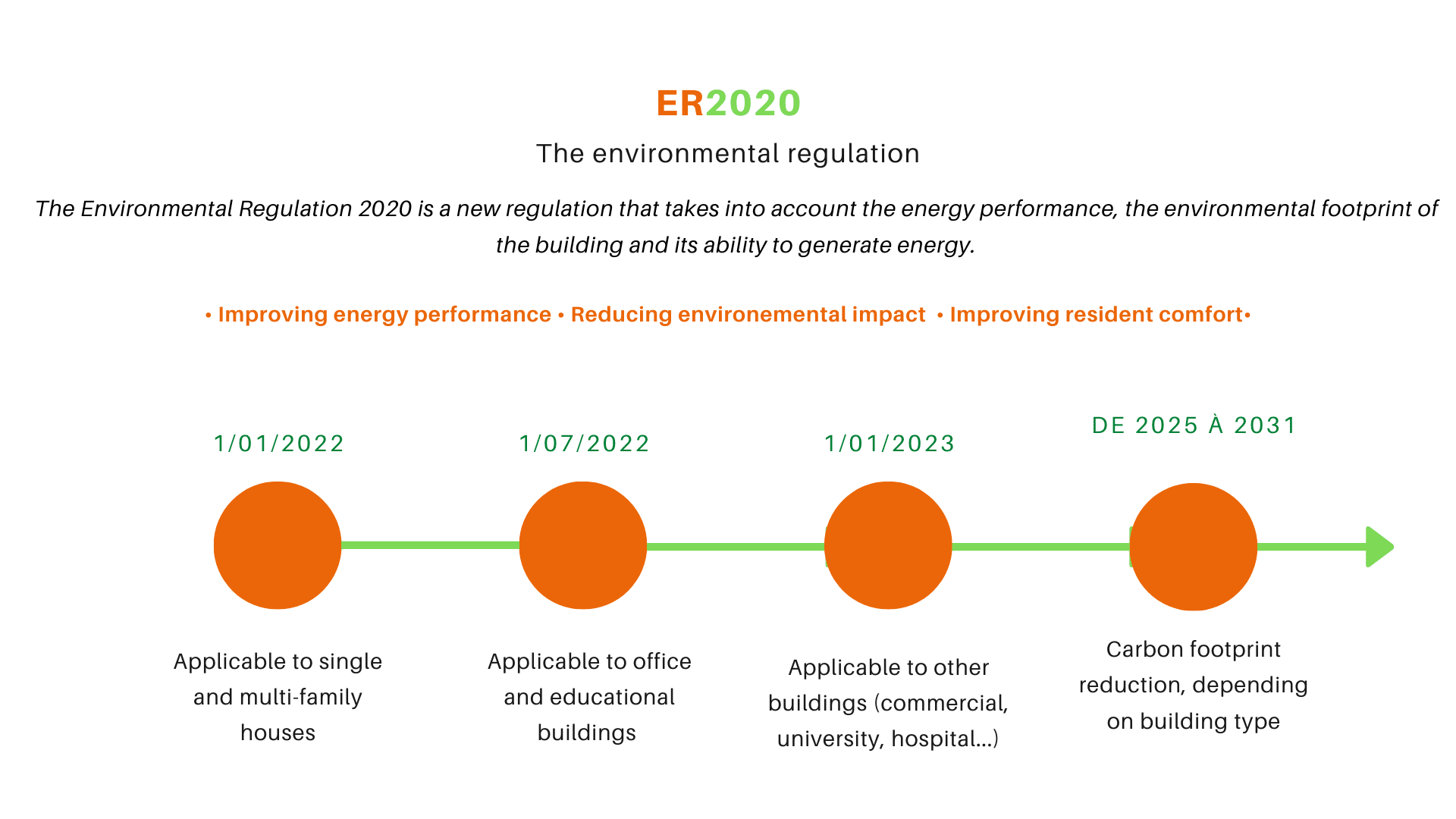Resilient building : the tertiary decree and the ER2020
Important dates to keep in mind
This January 1, 2023, marks two important events concerning the regulations to which the various types of buildings are subject.
For the tertiary decree, the deadline has come to an end concerning the declaration of buildings submitted on OPERAT.
For the RE2020, the regulation is now applicable to university, commercial, hospital buildings, etc.
The tertiary decree
The tertiary decree is a strong subject of the energy transition. But what is the purpose of this decree?
To reduce final energy consumption by -40% in 2030, -50% in 2040 and -60% in 2050.
This regulation, aimed at owners and operators of establishments housing tertiary activities (offices, shops, hotels, sports facilities, etc.), prescribes that they make the necessary changes to reduce energy consumption.
For this purpose, PHOSPHORIS accompanies the stakeholders of tertiary buildings and proposes an action plan concerning
– Adjustments and optimization of the functioning of the installations.
– Energy equipment and systems: energy production, air handling units, BMS…
– The building envelope: insulation class, light transmission factor…
– Local ENR&R production: photovoltaic production, energy storage

The ER2020
The French government created the RT 2012 in 2010 to limit the primary energy consumption of new buildings to a maximum of 50 kWhEP/m² per year on average. It has decided to go further in its eco-responsible approach by creating the RT 2020. This new regulation has a broader scope in order to aim for carbon neutrality in France by 2050. According to the Ministry of Energy Transition, the building sector accounts for 44% of energy consumption and nearly 25% of CO₂ emissions in France.
Since July 1, 2022, this new regulation has come into force for office buildings and educational institutions.
PHOSPHORIS therefore supports project owners so that new projects comply with this new regulation.
The design office has 3 trainers for the RE 2020 in order to explain in detail the calculation methods and many other subtleties of this new regulation.

You want to know more about our solutions?
Contact us now!



